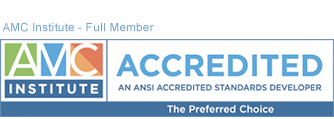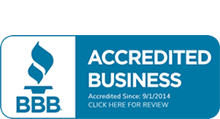Another in a series of articles related to association management selected from our reading list by:
Robert O. Patterson, JD
CEO/ Principal
The Center for Association Resources, Inc.
Association Resources
Benchmarking for success
Another in a series of articles related to association management selected from our reading list by:
Robert O. Patterson, JD
CEO/ Principal
The Center for Association Resources, Inc.
Benchmarking can be defined as the standard of excellence by which other activities should be judged.
A non-profit can use benchmarking to compare their current performance against their own past performance, or that of other similar non-profits. The scope of the benchmarking can include all aspects of the organization, such as fund-raising, measuring administration costs, and providing services relevant to the organization’s mission. For instance, one measurement the public often considers prior to making donations is the percentage of an organization’s administration costs versus the percentage of funds that are actually used in providing services to the intended population. If an organization has established benchmarks which identify whether the organization is keeping the percentage constant or declining, this could prove valuable to future donation revenue.
Top management often needs to lead the way towards benchmarking. Those in the field providing services often do not immediately see the need for benchmarking. Challenges for establishing and implementing benchmarking activities include overcoming individuals’ resistance to change as well as defining measurements and success for disparate or complex activities. Involving field personnel in the benchmarking process may facilitate overcoming some of these challenges.
Establishing and communicating the achievements of benchmarked measurements can increase public confidence in the efficiency and effectiveness of the organization. Public perception of the organization’s effectiveness is also an important item to gauge. Feedback from surveys, focus groups and online comments can be used to measure how the organization’s activities are perceived by the public. Positive public perception can have a direct impact on donations, so this is an important area to monitor.
Creating a Technology strategy
Another in a series of articles related to association management selected from our reading list by:
Robert O. Patterson, JD
CEO/ Principal
The Center for Association Resources, Inc.
The first thing that a non profit organization should do when they are creating a technology strategy is to create a website. This will be the building blocks of their technology plan and from here they can install many things that will help boost awareness and keep their organization alive! There are many ways to create a website, but the one that most non profit organizations should use is to follow a few steps. Usually the non profit will want to lease out a web domain (I suggest Godaddy.com) which will be the http of their site. This is the place on the web where they will store their information. Usually this dosen’t cost very much, and can be leased for around 5 dollars a month. Next thing they will want to do is get somebody who can help design their website. This will ensure that it looks both professional and also in this economy web designers are looking for work and will normally settle for less than usual, and they will be even more willing if its for a non profit.
Member survey research
Another in a series of articles related to association management selected from our reading list by:
Robert O. Patterson, JD
CEO/ Principal
The Center for Association Resources, Inc.
Non-profits must provide constant feedback to their membership groups in order to develop a better system for communication, fundraising, organizing and developing solid relationships to expand partnerships and recruit more volunteers. Asking questions of your members is the best way to obtain direct feedback from your members. The first thing to note is communication. How often is it appropriate to make contact with your volunteers? Maybe a weekly update via an email mailing list is appropriate, whereas a phone call to members may only be required once a year.
Members need to know that their money that is paid in the form of dues is a worthwhile investment for them, and being updated about the new events in the area is important. Perhaps you can break up the email list into communicating every two weeks, the upcoming events; or a monthly newsletter with breakdowns of what is happening. This way the member is not overwhelmed, is offered the opportunity to participate and work with the group, but they are not constantly inundated with messages from your group.
Another important research tool is fundraising growth potential with your members. How often should you connect with them on trying to make money? Maybe once a quarter you should send out an email that contains a direct payment opportunity; and there may also be a specialized event they can participate in. Do not underestimate the power of the people on your mailing list: reach out to them for donations, not only in monetary form. There may be an artist in your organization that can donate a piece to auction, a caterer who may be able to provide food at a discounted price, or a photographer who can take pictures at an event for your website. These are the critical pieces that can be put together if one really sees them as opportunities.
Its not about the money, it is truly about the people. There are members who can be interested in the organization, they are the ones who are going to help expand your company. Developing a simple to use online survey will provide value so you can better understand your membership market. It is important because it allows you to understand what your members want from you, while they can also provide you with their skills to compensate your business. Their time is valuable, And one should not discount the possibility that two hours of time is less of a contribution to your organization than a donation of $50. Those photos taken can impact your website which will then impact your web visitors, their donations and their willingness to devote time.
Using members in the member development campaign
Another in a series of articles related to association management selected from our reading list by:
Robert O. Patterson, JD
CEO/ Principal
The Center for Association Resources, Inc.
First, consider providing some type of incentive to members who can recruit people that they know to join. This rests on the philosophy that people are more likely to join or support an organization that they already know people in, and that members know people who have similar interests to them that may be in line with an organization’s mission statement or agenda. A for-profit example of this is Groupon’s model, which gives free products/services to members who can convince three of their friends to also join and make the purchase. The benefits from this approach, while essentially incorporating the structure of a “pyramid scheme,” provide the opportunity to expand your numbers exponentially.
Third, consider using social media tools to encourage your members to become involved in recruitment. There are several considerations and approaches that can incorporate social media, but I’ll discuss a few. First, consider having “membership drive days.” On Twitter, for example, many accounts take part in “Follow Fridays,” in which users tweet the handles of accounts that interest them and deserve to be followed. You may email your members, for example, and ask them to take part in Follow Friday. This will also create awareness among your members of your organization’s social media presence.
It doesn’t necessarily take slick PR or trained spokespersons to have a successful member recruitment campaign. By involving your members in the process, you’ll not only put more minds to work on the task, but also create stronger bonds between members and your organization.
Importance of committees
Another in a series of articles related to association management selected from our reading list by:
Robert O. Patterson, JD
CEO/ Principal
The Center for Association Resources, Inc.
The Board Development Committee is responsible for determining what skills a board member should possess and recruiting and training newly-hired members of the board. Members of this committee regularly communicate with the board members. They make sure that the members of the board are making positive contributions and that their board experiences are satisfying to them. The Board Development Committee also creates member evaluations and administers and interprets them. In short, the job of this committee is to ensure the strength of the board’s future.
The Fundraising Committee is also a vital part of any nonprofit group. The Fundraising Committee develops the organization’s annual fundraising plans and then tracks the planned versus the actual results each year. It is their duty to encourage and train the nonprofit’s members to become involved in any fundraising activities held by the group. They also look for any new activities that they can implement into their strategic fundraising plans. Special events subcommittees are often established to assist with these plans.
In conclusion, all nonprofits need these four committees to be successful. Each committee is equally beneficial to the group and unique in its responsibilities. A nonprofit that has all four of these committees in place is certain to run smoothly and be highly successful in their cause.







